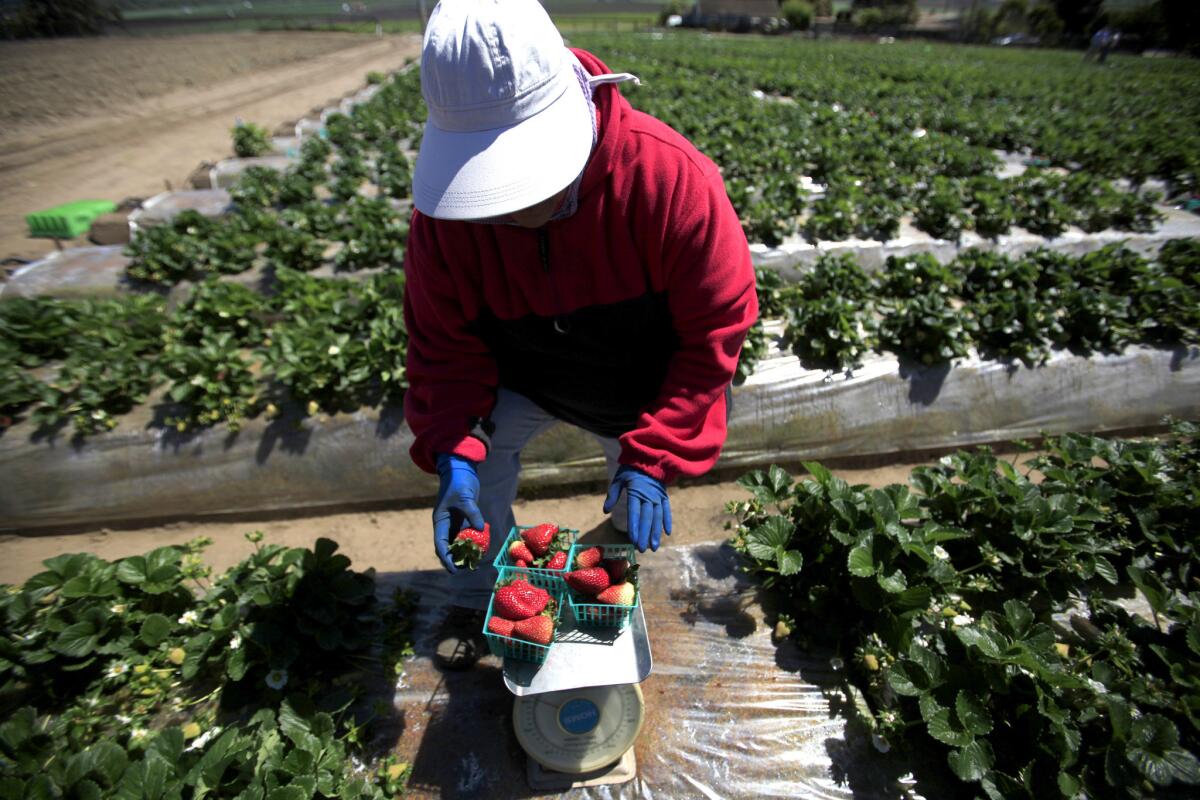State Department eases coronavirus bottleneck for foreign farmworkers

The U.S. State Department moved Thursday to ease a bottleneck caused by coronavirus precautions and allow more foreign agricultural guest workers to cross from Mexico to work fields in California and other states.
The emergency measures helped allay fears of a labor shortage just as the harvest of major produce crops gets underway in California, the top producer of many seasonal fresh vegetables and fruits nationwide.
Most foreign applicants no longer will need an in-person interview to obtain the H-2A agricultural guest worker permits, under the new rules announced Thursday.
That interview requirement had caused a bottleneck after U.S. consulates in the U.S.-Mexico border region were shuttered in response to the COVID-19 pandemic. Only certain returning applicants had been eligible for a waiver of the interview. Now, the waivers will apply also to first-time applicants and far more returning applicants, according to a U.S. Department of Agriculture memo.
“We anticipate the vast majority of otherwise qualified H-2 applicants will now be adjudicated without an interview,” the USDA memorandum said.
The expansion of the interview waivers “will ensure minimal disruption to the flow of guest workers at a time when our farming companies are redoubling their efforts to provide our nation with a safe, healthy, abundant and affordable food supply,” Dave Puglia, president of the Western Growers Assn., a regional trade group, said Thursday.
California has faced years of labor shortages caused by the aging of the local workforce, immigration crackdowns, improvements in job prospects in Mexico and other factors. The state’s growers have recruited more than 23,000 H-2A workers in the fiscal year that ended in October, placing the state fourth behind Florida, Georgia and Washington, respectively, according to the U.S. Labor Department.
Labor contracting surges dramatically in March and April, as produce shifts from the winter desert regions of California and Arizona and gets underway along the Central Coast. That region hosts the bulk of the state’s strawberry production and much of its spring and summer leafy greens, broccoli and cauliflower, among other crops.
Although guest workers make up a tiny fraction of the estimated 420,000 farmworkers in the state, they make up an important percentage of the crews in harvest areas, including the coastal valleys from Ventura County’s Oxnard plain through the Santa Maria Valley in Santa Barbara and San Luis Obispo counties, and the Salinas Valley in Monterey County.
The move comes days after the U.S. and Mexico agreed to block nonessential travel across their shared border in a bid to slow the spread of coronavirus.
More to Read
Inside the business of entertainment
The Wide Shot brings you news, analysis and insights on everything from streaming wars to production — and what it all means for the future.
You may occasionally receive promotional content from the Los Angeles Times.











